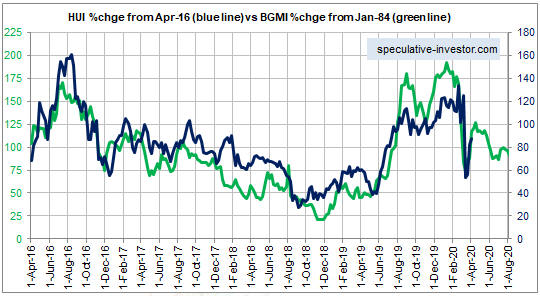Economics isn’t about money. Money is important because it facilitates the division of labour, but good economic theory applies with or without money. Economics is about how humans allocate scarce resources. This implies that trade-offs are critical to the good economist, because he/she understands that allocating scarce resources to satisfy one need in the present means that these resources will not be available to satisfy another need in the present or the future*. Right now, the entire world is dealing with a trade-off that has far-reaching consequences.
The trade-off is associated with the COVID-19 threat and has been portrayed as being between lives and money, but the correct way to view the trade-off is between lives today and lives in the future. Unfortunately, the people making the decisions regarding what should be done have neither the data nor the knowledge to properly analyse the trade-off.
For one thing, when decisions were made to implement widespread lock-downs these people clearly had no inkling of the short-term cost, in terms of illness and lives, of NOT locking down the economy. We know this because as recently as six weeks ago there were projections of millions of deaths in the US alone**, but the actual rates of death and serious illness have been vastly lower than projected. The experts who made these wildly inaccurate forecasts claim that the vastly lower death rates are due mainly to the lock-downs, but we know this isn’t true based on what happened in countries that didn’t implement draconian social distancing measures. For example, although Sweden, which was not forced into lock-down mode, has experienced a slightly higher rate of infection than its Scandinavian neighbours, its rate of COVID-19 infection is about the same as that of Germany, which is considered to have done a good job of containing the virus via strict social-distancing measures, and much lower than those of Spain, Italy, France and the US.
Even more importantly, the decision-makers are clueless about the long-term costs, in terms of lost lives and lowered living standards, that likely will result from the lock-downs. How could they not be clueless, because in order to make a reasonable assessment you must have a thorough understanding of history and good economic theory. As far as I can tell, not one of the health/medical officials or political leaders at the forefront of the COVID-19 decision-making process has this understanding.
Regarding the cost to human life stemming from locking down large sections of the economy, there is a lot of evidence that people who are poor and out of work are more likely to die than people who are financially comfortable. This is not only because the poorer people have access to lower-quality healthcare and food, but also because they are more prone to stress-related diseases and/or more likely to be subject to physical violence. In addition, a more immediate negative consequence of the lock-downs is that some people have been denied elective surgeries and others have decided not to seek immediate medical treatment for minor issues. This will lead to many deaths over the coming 12 months that would have been avoided with earlier medical intervention.
Note that I refer to GOOD economic theory above, because only a good economist is capable of comprehending the indirect, long-term and unintended consequences of a policy. A bad economist may well believe that shutting down the entire economy for 2+ months is akin to a very long weekend, and that everything will go back to normal soon after the shut-down ends — just like it does every Monday following the 2-day weekend shut-down. Larry Summers is a case in point.
The upshot is that people with power/authority are making decisions regarding a major trade-off between lives today and lives in the future while being in possession of insufficient information about one side and almost no information/knowledge about the other side of the trade-off.
*This is related to Frederic Bastiat’s Broken Window parable, in that what is immediately obvious is the benefit achieved by allocating the resource to satisfy one current need but what isn’t immediately obvious are the benefits that would have accrued if the resources had been allocated differently.
**The experts at Imperial College predicted 2.2M deaths in the US and 510K deaths in the UK.
 Print This Post
Print This Post

